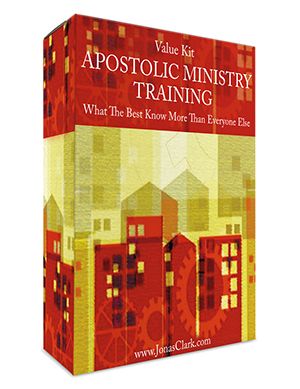 Learn how to form an apostolic church with insight from the leadership team of Antioch.The Antioch church was an example of an apostolic model. They came from all classes of society, from the wealthy and privileged to the street beggars, slaves and, yes, even criminals. They came from all manners of religious traditions, pagan sorcery, mystic cults, Greek mythology, idol worship, and Judaism.
Learn how to form an apostolic church with insight from the leadership team of Antioch.The Antioch church was an example of an apostolic model. They came from all classes of society, from the wealthy and privileged to the street beggars, slaves and, yes, even criminals. They came from all manners of religious traditions, pagan sorcery, mystic cults, Greek mythology, idol worship, and Judaism.
Welcome to the birthing of an apostolic church. “Who shall not fear thee, O Lord, and glorify thy name? For thou only art holy: for all nations shall come and worship before thee; for thy judgments are made manifest” (Revelation 15:4).
The church in Antioch started as a multiethnic, multicultural church. Religious churches have an extreme difficulty building apostolic ministries. That’s because religious spirits and racist spirits are cousins. Where you find one you find the other. To transition into the new apostolic revolution will need racism and prejudice broken down because they will try and stop the formation of an apostolic church.
The church in Antioch broke down racism’s walls. Antioch was filled with those from various cultures and races who loved one another.
Let’s review Antioch’s leadership team and their various gifts and learn how they became an apostolic model for ministry.
“Now there were in the church that was at Antioch certain prophets and teachers; as Barnabas, and Simeon that was called Niger, and Lucius of Cyrene, and Manaen which had been brought up with Herod the tetrarch, and Saul” (Acts 13:1).
First we notice there were apostles, prophets, and teachers including Barnabas, Simeon, Lucius, Manaen, and Saul in the church. Let’s look at our five members that formed the Antioch governing presbytery.
THE ANTIOCH PRESBYTERY:
BARNABAS
Barnabas was a Levite known as the "Son of Consolation". He was sent to Antioch by the leadership in Jerusalem after they heard of great revival among the Gentiles. The church received him as an apostolic leader who operated with a strong prophetic teaching gift.
SIMEON
Simeon is the first name mentioned of the Antioch members. His name means hearkening. He was also called Niger suggesting that he was a black man. The set man of the church in Antioch is unclear although I suspect it was Simeon. Simeon could well be the same man, Simon, that helped carry Jesus’ cross on the Delarosa Road (Mark 15:21, Luke 23:26).
Simon was from Cyrene (North Africa). He was the only one the blood of Jesus touched on the way to Calvary. Can you imagine that?
“And as they came out, they found a man of Cyrene, Simon by name: him they compelled to bear his cross” (Matthew 27:32).
Simeon was a black North African prophet and a founding pillar in the church at Antioch. Today thousands of Africans are launched into ministry by the Holy Spirit throughout the world as ambassadors of Christ. Some of the largest churches in Europe, for example, have, at the helm of leadership, black African apostles, prophets, and teachers with hundreds of evangelists who are carrying God’s glory throughout the cities.
LUCIUS
Lucius is the second name on our list. Lucius was a Gentile whose name means light. He too was a prophet and full of revelation. We learn he was part of an apostolic team with Timothy and sent out of the church in Antioch (Romans 16:21).
MANAEN
Then there was Manaen. His name means comforter. He was a foster brother of Herod the Tetrarch the governor of Antipas and the ruler who killed John the Baptist. Manaen was a noted member of society, a professional and educated man. Most likely he would have been a businessperson.
SAUL
Finally on our list is Saul of Tarsus. Saul, later named Paul, was part of the Antioch apostolic ministry team. He was educated in Judaism and trained by the well-known Pharisee Gamaliel (Acts 22:3). We know him today as the Apostle Paul. He was well versed in scripture, had a divine meeting with Jesus, was a Hellenistic Jew from Tarsus and Roman citizen.
UNVEILING THE APOSTOLIC CHURCH
What we see in Antioch was the forming an apostolic model comprising both Jews and Gentiles. Their leaders were apostles, prophets, and teachers. The ministry consisted of Barnabas, a sent-one from the church in Jerusalem, and members from various classes of society and ethic groups. Barnabas ministered to the people and the church grew in spiritual capacity and maturity. He was directed by the Holy Spirit to find Saul of Tarsus who had a supernatural call to the Gentiles. He found Saul who added his gift to the church. The presbytery, under the leading of the Holy Spirit, would soon send out their first apostolic team.
As this multicultural group of leaders gathered in prayer with fasting the Holy Ghost spoke, “Separate me Barnabas and Saul for the work that I have called them.” Notice who was directing the church, the Holy Spirit. “As they ministered to the Lord, and fasted, the Holy Ghost said, Separate me Barnabas and Saul for the work to which I have called them. And when they had fasted and prayed, and laid their hands on them, they sent them away” (Acts 13:2-3). Keep in mind this group of leaders consisted of apostles, prophets, and teachers, not pastors and evangelists. This is not to say pastors can’t teach because they can. We are identifying the different, yet, specific graces on the presbytery team.
Apostolic churches have one set man, various ascension gifts of apostles, prophets, and teachers that make up the presbytery and many pastors and evangelists. Through prayer and fasting the leadership prophesied, laid their hands on Barnabas and Saul, and sent them out on assignment. Forming this team and sending them opened the door to apostolic ministry to this church.
GOVERNING LEADERSHIP
An assembly of believers do not become a church until its governing leadership is in place (Acts 14:23; Titus 1:4-5; Hebrews 13:7, 17; 1 Thessalonians 5:12-13, 1 Peter 5:1-4). Governing leadership consist of fivefold ascension gifts of apostles, prophets and teachers. All churches are built around a fivefold ascension gift set-man. The set man receives a calling, receives an anointing, territory, and a vision. As the set man ministers, leaders draw to his gift and from those leaders the set man will appoint others to help carry the spiritual weight of the church. Those appointees will make up the church’s presbytery. Pastors and evangelists can be part of the presbytery according to the set man’s discretion. Apostles do not pastor the church, they apostle it. Apostolic churches may have many pastors that help the set man that are responsible for pastoring various groups within the local church.
Again, the church in Antioch formed a presbytery consisting of apostles, prophets, and teachers. Forming a presbytery may not happen overnight and I would caution you not to rush the process. Great care and prayer should precede membership selection. The number of presbytery members will vary. There is a special grace that comes over a local church when understanding the role of an apostolic presbytery. I believe there is much restoration truth coming in this area to the body of Christ.
The Holy Spirit uses apostolic presbyteries to govern the local church, offer support to the set-man, send out apostolic teams, and confirm ministry callings on specific believers. They are involved in guarding the ministry spiritually, advancing the vision of the house, and carrying the spiritual burden of the church. They are also used by the Holy Spirit to teach and raise spiritual sons and daughters of the ministry.
(c) Apostle Jonas Clark
www.jonasclark.com
-STAY INFORMED
GET THE FREE JONAS CLARK REVOLUTIONARY REVIEW
